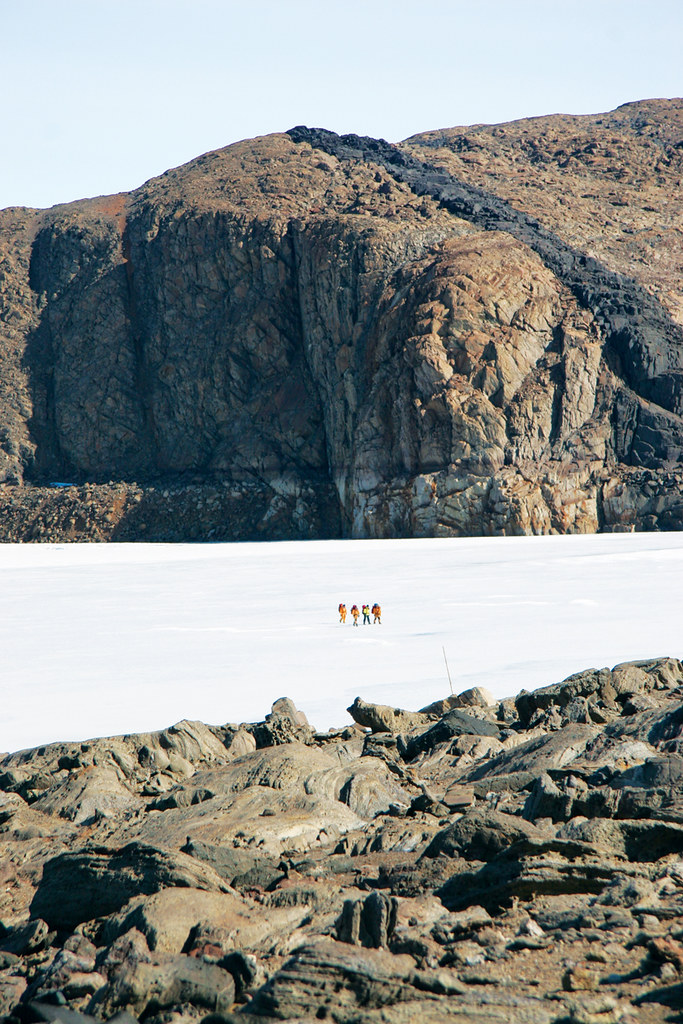Last night, I slept outside Watts Lake Hut in the Vestfold Hills. This photo of the hut was taken from inside my bivvy bag at 1:00 am! In December, the Antarctic sky is filled with daylight 24 hours a day. The Sun moves across the sky, just above the horizon, but never sets.
The seaward half of the Vestfold Hills, where the hut is located, does not get any of the powerful katabatic winds that come down off the Antarctic plateau, so I was super-toasty inside my bivvy bag. The night was perfectly still, and away from the station and its generators I experienced the silence of Antarctica for the first time.
This morning, I joined scientist Antek Skotnicki on one of his moss collecting trips. Before we set off, we drilled a hole into the surface of a frozen lake to make sure that it was safe to travel on. You can also get an idea of the condition of the ice by looking at it: thin ice is most often dark or grey.
Antek says the beauty of molecular science is that you only need to take tiny samples. I understand why this is important when Antek tells me that Antarctic moss grows at a rate of only 1 mm per year. A single careless footprint in the moss could remain there for many years, so I tread carefully!
Antek’s wife, Mary, a molecular biologist, will compare moss DNA from the samples Antek collects in
Antarctica to moss from South America and Tasmania. This may help her work out where the moss came from and perhaps when. Scientists believe that plants living in extreme environments like Antarctica may also provide an indication of how plants elsewhere may respond to climate change.
Carrying our 20 kg survival packs, we meandered through the hills, crunched across frozen lakes and slid down icy slopes in search of moss. It was fantastic work!



No comments:
Post a Comment